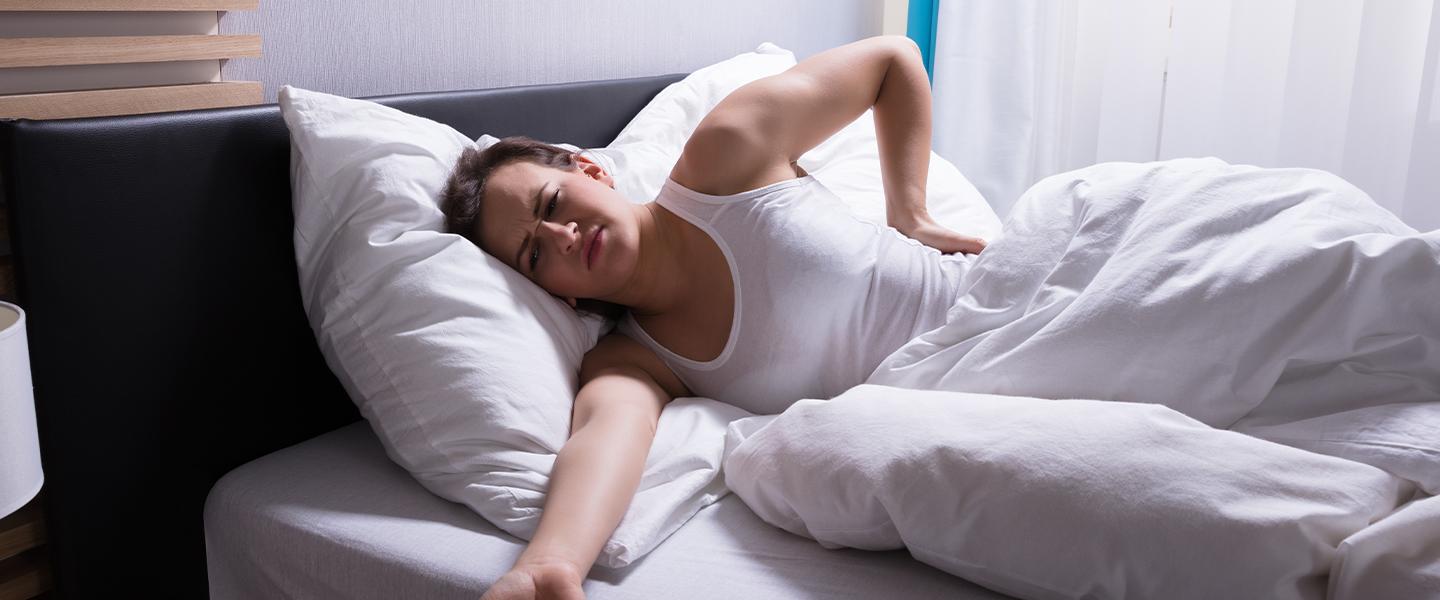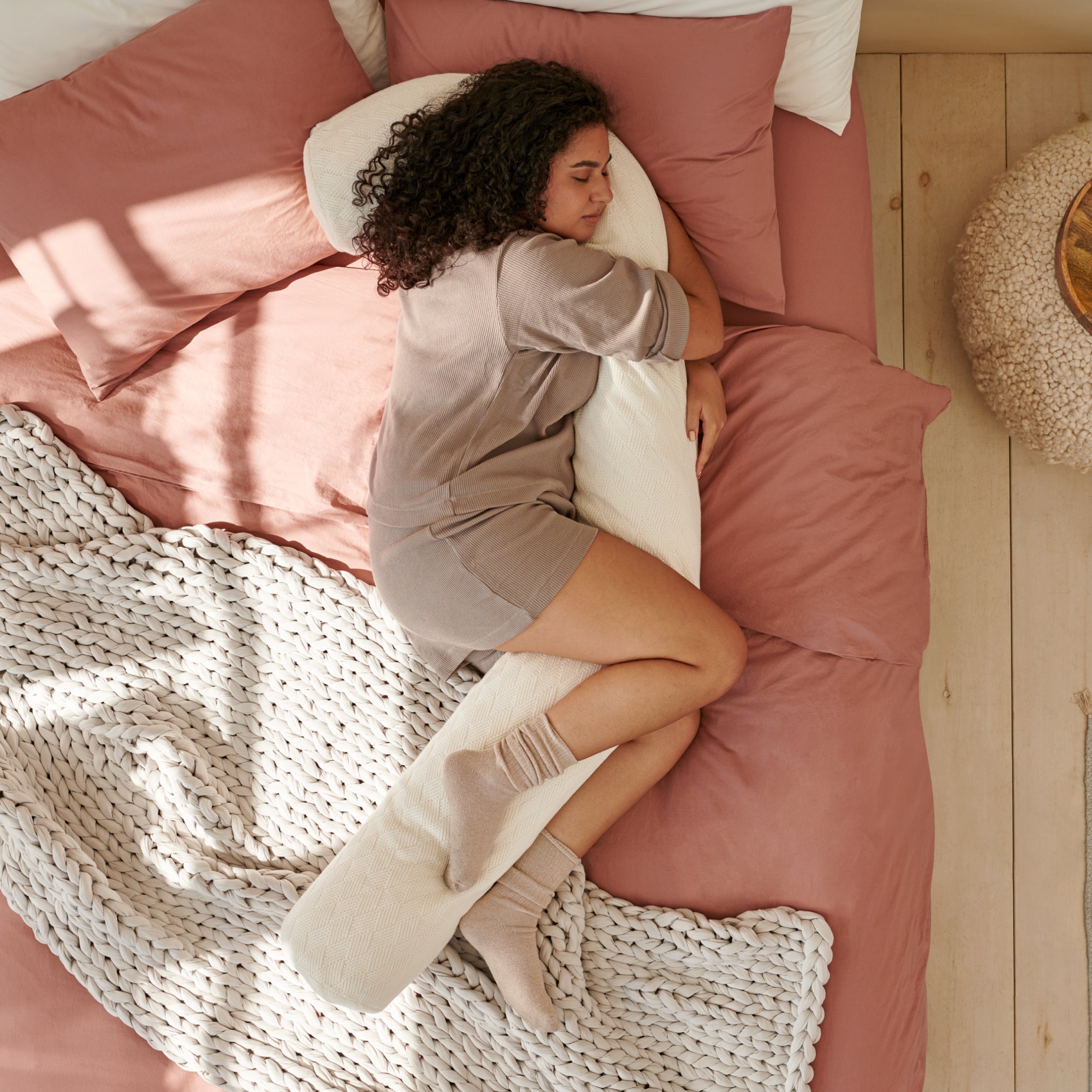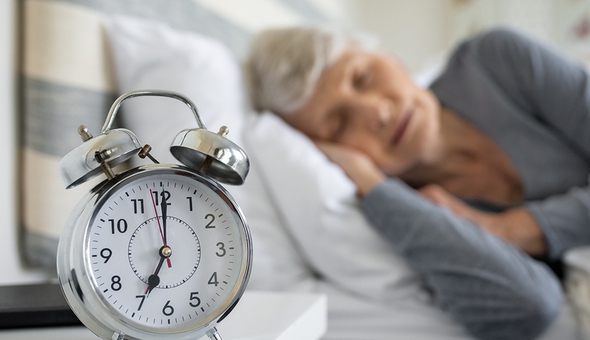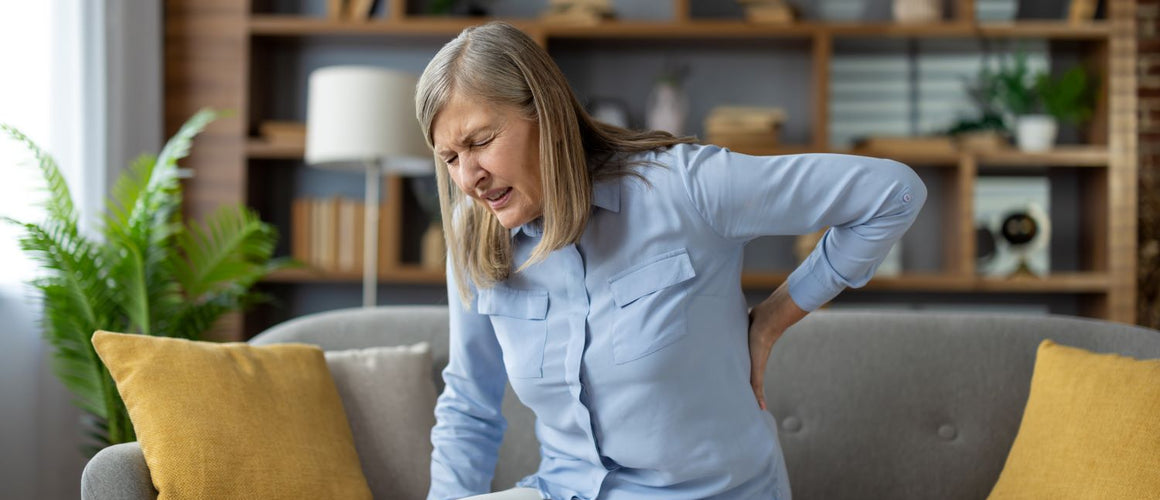As women age, physical changes become more pronounced—aching joints, stiffness, and especially lower back pain can begin to affect daily life and quality of sleep. Among the most common complaints among women over 50 is persistent discomfort in the lumbar region. While many turn to medications, physical therapy, or even surgery, some older women are finding significant relief through a much simpler and natural approach: changing how they sleep.
This might sound too easy to be true, but the way we sleep has a profound impact on spinal alignment, muscle tension, and pain levels—especially during the aging process.
Why Back Pain Increases With Age
Lower back pain in older women often stems from a combination of biological, hormonal, and lifestyle factors. According to the National Institute of Neurological Disorders and Stroke, about 80% of adults will experience lower back pain at some point, and it tends to become more persistent with age.

Common Causes in Women:
- Degenerative disc disease: Discs between the vertebrae lose hydration and flexibility.
- Osteoarthritis: Joint inflammation that may affect the spine.
- Osteoporosis: Weakened bones, especially in postmenopausal women.
- Poor posture or sedentary lifestyle: Weakening of back-supporting muscles.
- Herniated or slipped discs: Causing nerve compression and sciatica-like symptoms.
Additionally, hormonal changes after menopause, including decreased estrogen levels, can accelerate bone loss and joint degeneration, contributing to chronic discomfort.

How Sleep Influences Back Pain
Most people don’t realize that poor sleep posture can worsen or even cause lower back pain. Sleeping in the wrong position may compress nerves, strain muscles, or misalign the spine—especially if combined with an unsupportive mattress or pillow.
Sleep should be a time of restoration for your body. But if you’re waking up stiff, sore, or tired despite a full night’s rest, your sleep position may be to blame.
Signs Your Sleep Position Might Be Harming You:
- Waking up with lower back stiffness
- Discomfort that improves after moving around
- Numbness or tingling in legs upon waking
- Trouble falling or staying asleep due to pain
The Fetal Position: A Natural Reliever

The fetal position—lying on your side with knees pulled slightly toward the chest—is one of the most recommended sleep postures for people suffering from lower back pain. This position helps:
- Open up the vertebrae and reduce pressure on discs
- Relax spinal muscles
- Prevent misalignment of the lower back
- Relieve sciatica symptoms
Why This Works Especially Well for Older Women
- Women generally have wider hips, and side sleeping allows the spine to stay better aligned in relation to the pelvis.
- It also reduces pressure on internal organs, which can be helpful for digestion and circulation.
- For postmenopausal women, side sleeping may ease hot flashes and night sweats more than other positions.
How to Sleep in the Fetal Position Correctly
- Lie on your left or right side.
- Slightly bend your knees toward your chest—but don’t curl too tightly, as that can restrict breathing.
- Place a pillow between your knees to keep the hips aligned and reduce tension in the lower back and pelvis.
- Ensure your head is aligned with your spine, using a supportive but not overly firm pillow.

Other Beneficial Sleep Positions
1. Back Sleeping with a Pillow Under the Knees
- Helps maintain natural lumbar curvature
- Reduces pressure on the lower back
- Ideal for people with generalized back pain, not necessarily disc-related issues
2. Reclined Sleeping (in a recliner or adjustable bed)
- May benefit those with isthmic spondylolisthesis or degenerative disc disease
- Reclining opens up the angle between the thighs and trunk, relieving pressure on the spine
3. Sleeping with Lumbar Support Pillow
- Lumbar pillows or a rolled towel can be placed under the lower back when lying flat to support the spine.

Sleep Positions to Avoid
Stomach Sleeping:
Sleeping on your stomach is widely considered the worst position for lower back pain. It flattens the natural curve of the spine and forces the neck into a twisted angle, straining both the back and cervical spine.
If you must sleep on your stomach:
- Use a very thin pillow or no pillow under your head
- Place a small pillow under your lower abdomen to relieve lumbar stress
Supportive Tools That Help
- Medium-firm mattress: Research published in The Lancet found that people with chronic back pain reported better outcomes on medium-firm mattresses than firm ones.
- Knee pillow: Helps side sleepers maintain alignment.
- Adjustable beds: Allow reclined sleeping for certain spinal conditions.

Lifestyle Tips to Complement Sleep Changes
- Daily stretching: Focus on gentle back and hamstring stretches.
- Low-impact exercises: Swimming, walking, or yoga can strengthen the core and improve posture.
- Avoid long periods of sitting: Take breaks and use lumbar support chairs.
- Use heat therapy at night: A heating pad for 15 minutes before sleep can relax tight muscles.
When to See a Doctor
If your back pain:
- Lasts more than 12 weeks
- Causes numbness, tingling, or shooting leg pain
- Is accompanied by weight loss or fever
You should consult a healthcare provider to rule out serious conditions such as spinal stenosis, nerve impingement, or infections.

Real-World Experiences
Many older women have reported notable improvement in back pain by simply adjusting their sleep positions. While individual results vary, the consistent theme is that small changes can bring noticeable relief.
“I stopped waking up sore every morning just by using a pillow between my knees. It seemed silly at first, but now I won’t sleep without it,” shared one 67-year-old woman in an online wellness forum.
Conclusion
Chronic lower back pain can significantly impact an older woman’s quality of life—but relief doesn’t always require complicated treatments. Adopting the right sleep position, particularly the side-lying fetal pose with proper support, can help align the spine, relax muscles, and promote restorative sleep.
Before reaching for medications, consider adjusting how you sleep. Listen to your body, track improvements, and don’t hesitate to seek professional guidance if your symptoms persist.
Sources:
- National Institute of Neurological Disorders and Stroke – Low Back Pain
- Mayo Clinic – Back Pain: Symptoms and Causes
- Harvard Health – The Best Sleep Positions for Back Pain
- Cleveland Clinic – How to Sleep Better With Back Pain
- The Lancet – Effect of Mattress Firmness on Chronic Back Pain
